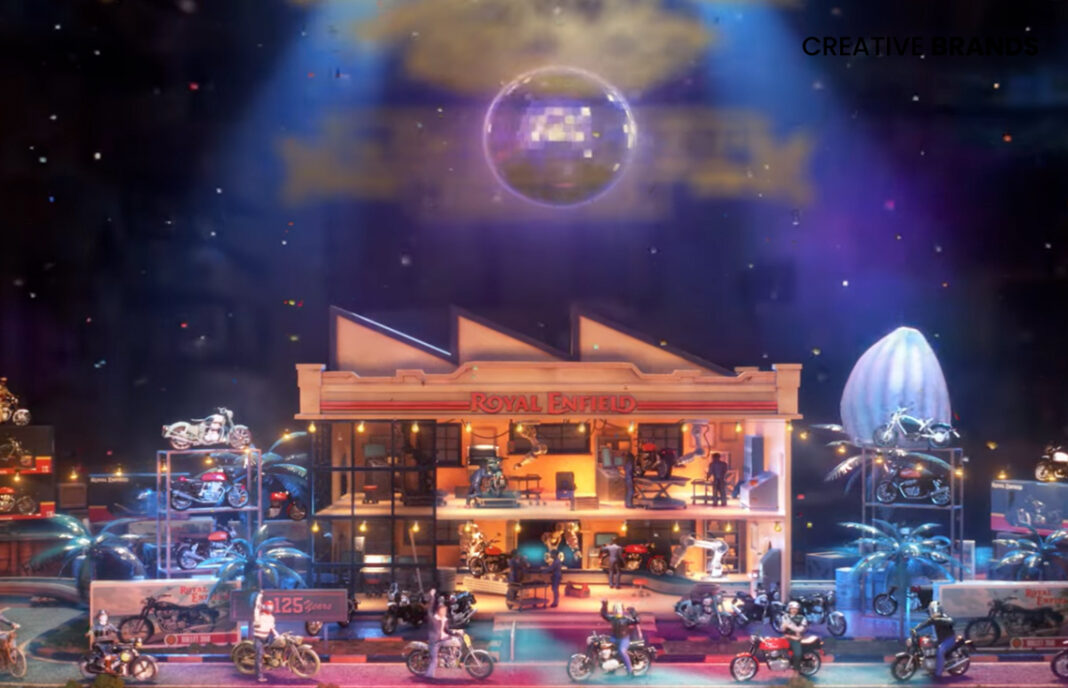Royal Enfield celebrates 125 years of uninterrupted motorcycling heritage, tracing its journey from Redditch to Chennai and from battlefields to global highways. Now operating across 60+ countries with extensive manufacturing and technical capabilities, the brand continues to champion “Pure Motorcycling,” blending timeless design with modern engineering to inspire generations of riders worldwide.
Royal Enfield is marking a milestone only a handful of brands in the world can claim—125 years of uninterrupted motorcycling legacy. As the world’s oldest motorcycle manufacturer in continuous production, the company’s story reads like the history of motorcycling itself, evolving through continents, cultures and generations without ever losing sight of its identity. From its first motorcycle in 1901 to its global presence in 2025, Royal Enfield’s journey is as much about endurance and reinvention as it is about steel, engines and design.
Its anniversary tagline, “From 1901 to 2025, from Redditch to Madras, from battlefields to beaches—our wheels have never stopped turning,” captures the sweeping arc of a brand that has survived wars, economic cycles, cultural shifts and technological upheavals. But it also speaks to something deeper: the emotional bond that riders across the world have formed with their Royal Enfield machines. In a world racing toward faster, sleeker, and more futuristic machines, Royal Enfield has held its ground with a philosophy that celebrates “Pure Motorcycling”—the joy of the ride, the thump of the engine, the simplicity of the machine and the connection between rider and road.
The company’s origins trace back to Redditch, a small industrial town in England, where Royal Enfield began building bicycles, lawnmowers and later motorcycles. The iconic “Made Like a Gun” tagline emerged from its background as a supplier to the Royal Small Arms Factory, symbolising endurance and dependability. The motorcycles quickly moved beyond recreational riding and found a place on battlefields. During both World Wars, Royal Enfield supplied motorcycles to the British armed forces, including the legendary WD/RE “Flying Flea,” a lightweight bike that could be dropped by parachute. It was here, in rugged terrains and harsh conditions, that the motorcycles earned their reputation for reliability.
The next major chapter in the company’s evolution unfolded thousands of miles away. In the 1950s, the Indian government needed sturdy, durable patrol motorcycles for its police and army. Royal Enfield’s Bullet 350 was selected, and by 1955, the company partnered with Madras Motors to assemble the motorcycles in Chennai (then Madras). What began as a practical decision eventually became a defining turning point. While Royal Enfield’s UK operations closed decades later, the Indian arm not only continued production but transformed into the heart of the brand. Chennai became the company’s global manufacturing hub, and India became synonymous with Royal Enfield’s resurgence.
Over the years, Royal Enfield cultivated a cult-like following in India—its motorcycles turning into symbols of aspiration, adventure and timeless design. Long before social media romanticised travel, Royal Enfield riders were already crossing high-altitude passes in Ladakh, embarking on road trips that blended ruggedness with quiet contemplation. The brand’s appeal wasn’t about speed or technical sophistication; it was about character, nostalgia and the art of slow, immersive riding.
As India modernised, motorcycling tastes changed, and the market exploded with faster, feature-rich bikes. But Royal Enfield doubled down on simplicity and emotional resonance. This counterintuitive move paid off. The company carved out—and dominated—the mid-sized motorcycle segment in India, a space between entry-level commuter bikes and high-end performance machines. Its modern classic models such as the Bullet, Classic, Meteor and Interceptor became global favourites, not because they were the most advanced, but because they offered something the market lacked: authenticity.
Today, Royal Enfield’s reach stretches across more than 60 countries. What started in Redditch and found its soul in Chennai now thrives in Europe, the Americas, Southeast Asia and Australia. The brand operates five CKD (Completely Knocked Down) assembly units in Argentina, Brazil, Colombia, Nepal and Thailand, allowing it to adapt efficiently to local markets. It also runs more than 3,000 retail touchpoints across continents, making its motorcycles accessible to a growing community of international riders.
Supporting this growth is a network of three state-of-the-art manufacturing facilities in Chennai, where craftsmanship meets industrial scale. The company’s technical centres in Chennai and the U.K. play a crucial role in research, engineering and design, blending Indian manufacturing expertise with global innovation. This combination has helped Royal Enfield remain competitive while retaining its signature retro aesthetic.
What makes Royal Enfield’s milestone exceptional is not just the longevity but the consistency of its identity. While many heritage brands have reinvented themselves radically or lost relevance over time, Royal Enfield has maintained a clear ethos—motorcycling should be simple, soulful and accessible. Even as electrification and digitalisation reshape the global automotive industry, the company remains committed to offering experiences that highlight the feeling of the ride rather than drowning it in technology. Yet it hasn’t been resistant to change; instead, it embraces a philosophy of “evolution, not revolution.”
This approach is reflected in the subtle but meaningful advancements in its recent motorcycles—better engines, refined ergonomics, improved safety and enhanced reliability—all while keeping the unmistakable Enfield silhouette and riding character intact. The brand has also expanded its lifestyle ecosystem, curating apparel, accessories and community events that celebrate the culture of motorcycling.
A cornerstone of its identity remains the rider community. Royal Enfield has nurtured one of the most passionate motorcycling communities in the world, with organised rides, global meetups, long-distance expeditions and iconic events like Rider Mania. These gatherings are not merely brand engagements; they are cultural celebrations that unite riders from diverse backgrounds who share a love for exploration and craftsmanship.
The company’s 125-year celebration is not just a look back at its journey but a reaffirmation of its commitment to the future. The world of mobility is changing rapidly, with electric vehicles and advanced technologies driving new expectations. Royal Enfield’s challenge—one it seems willing to embrace—is to evolve without diluting the purity that defines its motorcycles. Its investments in design and engineering, coupled with global expansion plans, signal that it aims to stay relevant for another century and beyond.
At 125 years, Royal Enfield stands as a rare intersection of heritage and modernity. Few motorcycle brands have survived so long, and even fewer have continued production uninterrupted. The company’s staying power lies in its ability to generate emotional connection—a connection built not just on machines, but on journeys, memories and a shared sense of adventure. Whether on battlefields or beaches, in booming cities or remote mountain passes, Royal Enfield motorcycles have continued to turn their wheels, carrying the past into the future with unmistakable rhythm.
As 2025 approaches and the brand celebrates its quasquicentennial year, the story of Royal Enfield is more than a corporate milestone. It is a testament to a legacy shaped by riders, engineers, dreamers and explorers. And it is a reminder that in a world constantly reinventing itself, some traditions are worth preserving—not because they resist change, but because they inspire it.







